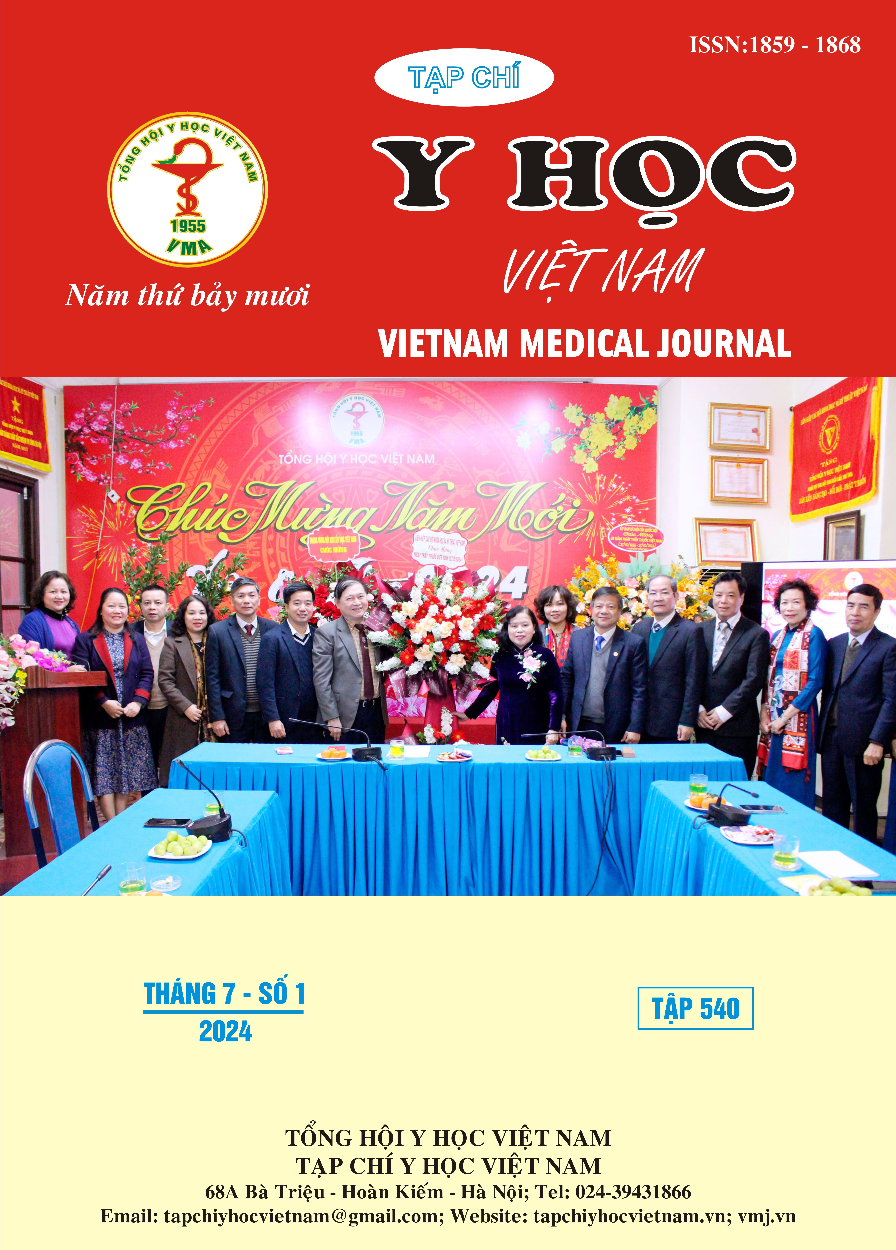EVALUATING THE RESULT OF CRANIOPLASTY USING 3D TITANIUM SCREW MESH
Main Article Content
Abstract
Objective: Describe the clinical characteristics and evaluate the results of cranioplasty with 3D titanium screw mesh at hospital 175, hospital 103 and hospital 108. Subject and method: 52 patients underwent cranioplasty with 3D Titanium at Hospital 103, Military Central Hospital 108 and Hospital 175, from January 2021 to August 2023. Results: Headache and pain at the skull defect are the most common symptoms with rates of 67.31% and 46.15% of cases, respectively. After surgery, 94.23% of patients had at least one positive result or more. The overall complication rate after surgery was 17.31%. There were no cases of death after surgery. Common complications are: new seizures (9.62%), hydrocephalus (3.85%), fluid-air collection under the patch (3.85%)... Group of patients with VP- Previous shunts or infections related to previous surgery have a higher rate of postoperative complications than the other groups. No relationship has been found between a number of other factors such as age, gender, and comorbidities. According to the location of the skull defect or the initial cause of complications after thoracotomy with Titanium 3D. Conclusion: Titanium 3D can be an ideal replacement material for cases of skull defects where there is no autologous bone left for grafting
Article Details
Keywords
Cranioplasty, 3D Titanium, the Syndrome of the Trephined.
References
2. Winkler PA, Stummer W, Linke R, Krishnan KG, Tatsch K. Influence of cranioplasty on postural blood flow regulation, cerebrovascular reserve capacity, and cerebral glucose metabolism. J Neurosurg 2000;93:53 6
3. Brommeland, Tor, et al. "Cranioplasty complications and risk factors associated with bone flap resorption." Scandinavian journal of trauma, resuscitation and emergency medicine 23.1 (2015): 1-7.
4. Roh H, Kim J, Kim JH, et al. Analysis of Complications After Cranioplasty with a Customized Three-Dimensional Titanium Mesh Plate. World Neurosurg. 2019;123: e39-e44. doi:10.1016/j.wneu.2018.10.227
5. Mukherjee S, Thakur B, Haq I, Hettige S, Martin AJ. Complications of titanium cranioplasty--a retrospective analysis of 174 patients. Acta Neurochir (Wien). 2014;156(5): 989-998; discussion 998. doi: 10.1007/s00701-014-2024-x
6. De Cola MC, Corallo F, Pria D, Lo Buono V, Calabrò RS. Timing for cranioplasty to improve neurological outcome: A systematic review. Brain Behav. 2018; 8(11): e01106. doi:10.1002/ brb3.1106
7. Williams, L. R., K. F. Fan, and R. P. Bentley. "Custom-made titanium cranioplasty: early and late complications of 151 cranioplasties and review of the literature." International journal of oral and maxillofacial surgery 44.5 (2015): 599-608.
8. Fodstad H, Love JA, Ekstedt J, Fridén H, Liliequist B. Effect of cranioplasty on cerebrospinal fluid hydrodynamics in patients with the syndrome of the trephined. Acta Neurochir (Wien) 1984;70:21 30
9. Honeybul, Stephen, et al. "A randomized controlled trial comparing autologous cranioplasty with custom-made titanium cranioplasty." Journal of neurosurgery 126.1 (2017): 81-90.


